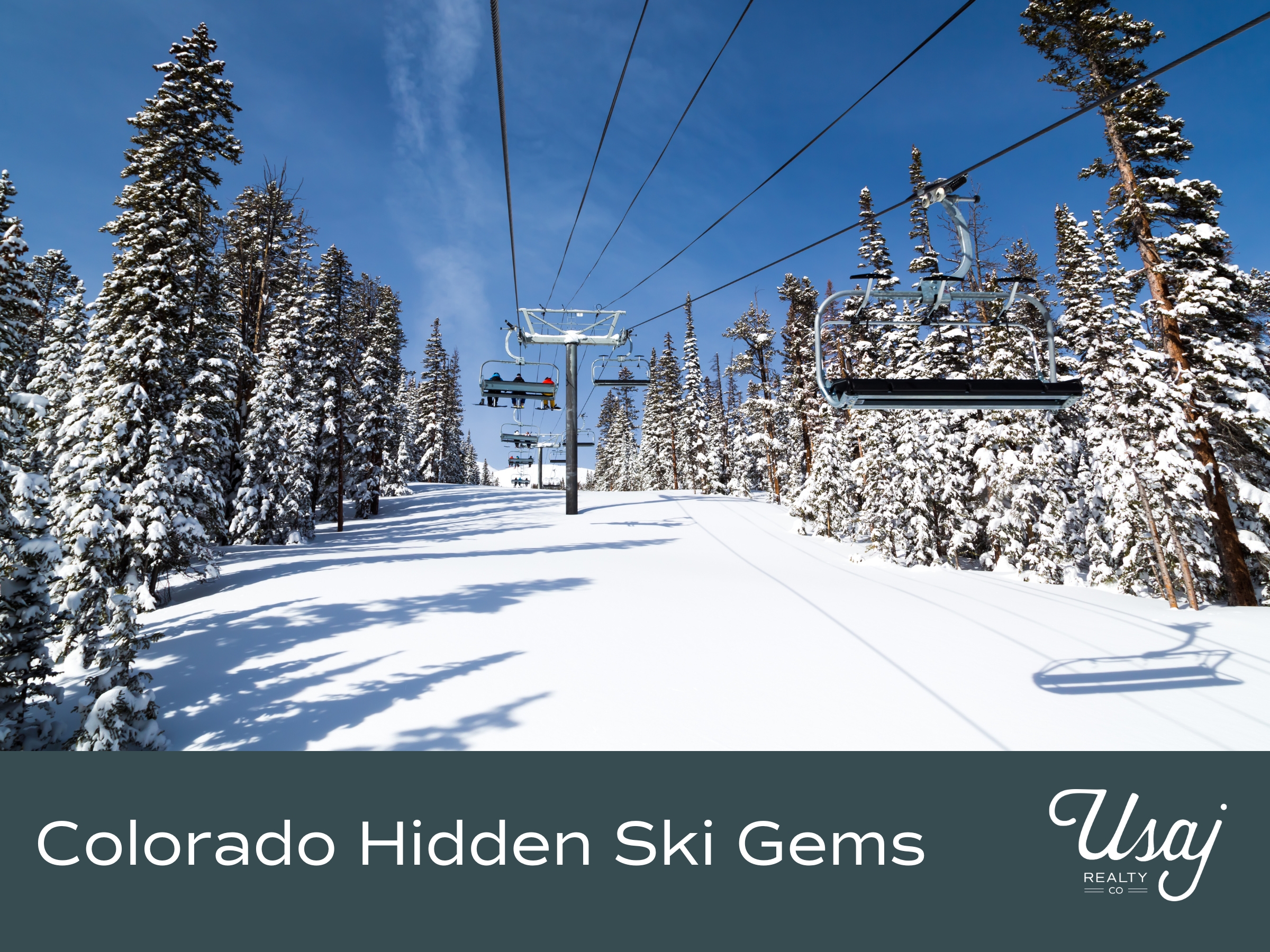Caves in Colorado
Greetings from Usaj Realty! As lovers of all things Colorado, we are excited to share some of the state’s hidden treasures with you – the magnificent caves of Colorado. These subterranean marvels span the state, each with its unique attributes and appeals. Whether you’re an adrenaline junkie or you crave serenity, there’s a Colorado cave just waiting to be explored.
Vapor Caves
Historical Background
The Yampah Vapor Caves have been in continuous operation since 1893, though their history stretches back much further. Long before white settlers arrived, the Ute Indians utilized the area for its natural hot springs. In the late 19th century, the caves were commercialized, especially after Glenwood Springs was founded as a town in 1883. By 1887, the first commercial activities began, including the construction of several underground chambers designed to accommodate visitors seeking the healing properties of the mineral-rich steam.
Features of the Caves
The Yampah Vapor Caves feature three interconnected underground chambers filled with steam from geothermal waters, reaching temperatures of around 125°F. Inside, the ambient temperature remains a soothing 110-112°F, perfect for relaxation. Visitors access the caves via a staircase and can unwind on marble benches while enjoying the therapeutic steam. This steam is infused with 34 beneficial minerals, including sulfate, nitrate, zinc, and potassium, which are believed to promote various health benefits.
Visitor Experience
Guests can indulge in the vapor caves for 10-12 minute intervals, with cooling breaks available in a nearby room or the solarium. The facility also provides a range of spa services, including massages and body treatments, which enhance the overall wellness experience. The Yampah Spa and Vapor Caves consistently attract visitors from around the globe, promoting relaxation and health through their unique geothermal offerings.
Ice Caves
The Ice Caves at Rifle Mountain Park in Colorado are a captivating natural attraction, particularly during the winter months. Located about 30 minutes north of the city of Rifle, these caves transform into a winter wonderland from December through February, thanks to cycles of freezing and thawing that create stunning ice formations.
Features of the Ice Caves
Cave Names and Descriptions: There are four main caves to explore, named the Ice Palace, Soul on Ice, Stone Tree, and Final Curtain. These caves feature beautiful turquoise icicles hanging from their icy limestone walls, creating a magical atmosphere reminiscent of a frozen fantasy land.
Seasonal Beauty: The best time to visit the ice caves is during the winter months when the ice formations are at their peak. The caves are accessible via the Koper’s Trail, which is an easy to moderate hike with a distance ranging from 0.75 to 4 miles, depending on how many caves you wish to explore.
Safety and Accessibility: Visitors are advised to wear proper traction devices like microspikes or crampons due to the icy conditions inside the caves. The trail and caves can be slippery, and it’s important to dress warmly and bring necessary gear for a safe visit.
Activities and Surroundings
Outdoor Recreation: Rifle Mountain Park is not only known for its ice caves but also for being a popular spot for rock climbing and ice climbing, offering over 250 bolted routes in the canyon. In the summer, the park is frequented by rock climbers, while in winter, ice climbing becomes a favored activity.
Nearby Attractions: Just a short distance from the ice caves, Rifle Falls State Park offers a scenic view of a triple cascading waterfall, which can be a delightful addition to a visit to the area.
Overall, the Ice Caves at Rifle Mountain Park offer a unique and enchanting experience for those looking to explore Colorado’s natural winter beauty. Whether you’re hiking, climbing, or simply enjoying the icy scenery, this destination provides a memorable adventure.
Fulford Cave
Fulford Cave, nestled in the White River National Forest near Eagle, offers a refreshing escape from the summer heat, consistently maintaining a temperature of 42 degrees Fahrenheit. This cave presents an enjoyable adventure following a moderate hike.
Located approximately 15 miles southeast of Eagle, Colorado, Fulford Cave is a popular destination for spelunkers and outdoor enthusiasts alike. As the 12th longest known cave in Colorado, it features a flowing creek and impressive 80-foot ceilings in certain chambers, making it a remarkable site to explore.
History and Features
Fulford Cave was first documented in 1874 by geologist Ferdinand Hayden, although it was later claimed to have been discovered by Captain Nolan Smith in 1890. Named after the nearby town of Fulford, the cave was shaped by a melting glacier and features approximately one mile of passageways. Its unique characteristics include flowstone draperies that resemble frozen waterfalls and rock formations reminiscent of an elephant’s backside.
Access and Regulations
The cave welcomes visitors from mid-April to mid-October, but entry requires a permit from the Forest Service. It is closed from October 15 to April 15 to safeguard the hibernating bat population. To prevent the spread of White Nose Syndrome, a disease affecting bats, visitors must adhere to gear decontamination guidelines.
Fulford Cave Campground
The Fulford Cave Campground, nestled near the cave, provides a rustic camping experience without potable water and features a vault toilet. Operated on a first-come, first-served basis, the campground welcomes visitors from May/June to mid-October. Set in a picturesque area with views of Yeoman Park, it offers access to various trails that lead into the Holy Cross Wilderness.
Despite the challenges in reaching its more pristine sections due to past damage from visitors and vandals, Fulford Cave remains a favored destination for spelunkers of all skill levels.
Mollie Kathleen Gold Mine
The Mollie Kathleen Gold Mine offers a thrilling underground adventure, allowing visitors to descend 1,000 feet into the mountain via a rattle-cage elevator. This impressive descent takes you into a historic vertical mine shaft that stands nearly as tall as the Empire State Building.
Located near Cripple Creek, Colorado, the Mollie Kathleen Gold Mine provides a unique glimpse into the gold mining era. Named after Mollie Kathleen Gortner, who staked her claim in 1891, the mine operated continuously until 1961, with the exception of a government-mandated pause during World War II. Today, it stands as a popular tourist attraction, welcoming around 40,000 visitors each year, eager to explore its rich history.
Tour Experience
Visitors to the Mollie Kathleen Gold Mine can enjoy a captivating one-hour guided tour that ventures deep underground. This immersive experience includes:
- A thrilling descent of 1,000 feet via a vertical shaft.
- An exploration of the evolution of underground mining techniques.
- The opportunity to view gold veins in their natural state.
- A ride on an underground tram air locomotive.
- An engaging experience of the sights and sounds of mining equipment.
Additional Information
The Mollie Kathleen Gold Mine, recognized by the National Geological Survey as a historic gold production site, offers tours from spring to fall. Visitors are gifted a complimentary gold ore specimen as a keepsake. Inside the mine, the temperature remains a consistent 50 degrees Fahrenheit, and it’s important to note that tours are not ADA accessible. For larger groups, reservations are highly recommended, and safety gear, including hard hats, is provided.
This site delivers an authentic glimpse into Colorado’s rich mining history, offering educational and interactive insights into the lives of gold miners from the late 19th to early 20th centuries.
Rainbow Falls
Rainbow Falls, commonly known as “Graffiti Falls,” is nestled near Manitou Springs, Colorado. This stunning waterfall is renowned for its vividly painted canyon walls, adorned with vibrant graffiti that create a striking and colorful backdrop. Cascading approximately 45 feet, the falls are located along Fountain Creek, making them a favored destination for visitors throughout the year.
Access and Features
Location and Access: The falls can be easily reached via a short, gentle hike from the trailhead on Serpentine Drive, just off Highway 24. This 0.2-mile round trip makes it accessible for visitors of all ages and abilities.
Historic Significance: The site features a historic bridge built in 1932, proudly listed on the National Register of Historic Bridges. Ongoing restoration efforts aim to combat issues such as erosion, graffiti, and litter, while preserving the area’s natural beauty and historical importance.
Parking and Shuttle Service: To ensure safety from falling rocks, the original parking lot is now closed. Visitors must park off Highway 24 and Serpentine Drive. A shuttle service operates from Friday to Sunday for $20 per car, which includes both parking and transport to the falls.
Visitor Information
Season and Timing: Rainbow Falls is open year-round, with spring being the ideal time to visit due to the heightened water flow. The area features picnic tables and limited seating, providing a delightful setting for a quick stop or a leisurely afternoon.
Regulations: Swimming is not permitted, and visitors should avoid wading into the creek due to potential hazards, such as glass and sharp objects. Dogs are welcome if kept on a leash.
Rainbow Falls presents a unique blend of natural beauty and cultural history, making it a must-visit destination for anyone exploring the Manitou Springs area.
Spring Cave
Spring Cave, situated in the White River National Forest near Meeker, is ideally suited for experienced spelunkers. A brief hike through a forest of blue spruce and aspen trees leads to an intricate network of tunnels and one of the largest underground waterways in Colorado. This extensive cave system, primarily shaped by an underground river that flows through it, remains largely unexplored. The river is notable for being the largest within a cave in the state, with water levels that can fluctuate dramatically throughout the year, occasionally rising to the entrance level.
Features of Spring Cave
Cave Layout: This cave boasts two entrances, both accessible via the Spring Cave Trail. Most visitors opt for the larger entrance, which stands over two meters tall. Inside, the cave features multiple chambers and a permanent ladder that descends to the river. Beyond the river, additional rooms and an underground lake await, with some areas accessible only through underwater diving.
Exploration and Access: The cave is open to the public from April 16 to August 14. Visitors must register and adhere to decontamination procedures to prevent the spread of White Nose Syndrome, a disease impacting bat populations. To protect hibernating bats, the cave remains closed from August 15 to April 15.
Visitor Experience
Spring Cave presents a unique opportunity for caving enthusiasts, featuring a blend of easily accessible chambers and more challenging underwater passages. Its remote location fosters a tranquil atmosphere, often allowing visitors to explore in solitude, away from crowds. The cave’s waters have been traced back to the South Fork of the White River, enhancing its geological intrigue.
In summary, Spring Cave is a captivating destination for spelunkers and nature lovers alike, offering a harmonious mix of adventure and natural beauty within the stunning Colorado wilderness.
Premonition Cave
Premonition Cave, nestled in Deep Creek Canyon near Gypsum, Colorado, boasts nearly two miles of intriguing passageways waiting to be explored. With its chimneys and narrow crawls, it presents an exciting challenge for adventurous spelunkers.
Located on the north rim of Deep Creek Canyon, approximately 12 miles west of Gypsum, this cave is best suited for advanced spelunkers due to its technical nature and remote setting. The extensive network of passageways includes chimneys, tight spaces, and walking trails, offering a varied caving experience for those skilled enough to navigate its depths.
Situated within the White River National Forest, Premonition Cave has undergone bat surveys, revealing some bat activity, though no significant hibernating populations have been recorded. Its cool microclimate is conducive to bats utilizing torpor, and scattered guano deposits indicate that it may serve as a transitional or day roost.
Safety Considerations
When planning a visit to Premonition Cave, safety should be a top priority. The challenging terrain and technical nature of the cave mean that only those with advanced spelunking skills should attempt to explore its passageways. It is crucial to wear appropriate caving gear, including a helmet, headlamp, and sturdy footwear, to navigate safely through tight spaces and chimneys. Additionally, bringing a map of the cave and having a companion can enhance safety during your adventure.
Preparing for Your Adventure
Before heading out to Premonition Cave, it’s essential to prepare adequately. Ensure that you have ample supplies, such as water, snacks, and a first aid kit, as the remote location may make access to assistance difficult. Understand the specific challenges the cave may present, including rough terrain and potential hazards within the cave itself. Familiarize yourself with local regulations regarding cave access and conservation efforts to help protect this unique environment.
The Grottos
The Grottos, located near Aspen in the White River National Forest, present a stunning cave entrance and a leisurely hiking experience. Visitors can enjoy the enchanting features of rocky pools, cascading waterfalls, and walkable caves filled with river water.
This popular natural attraction is accessible via the Grottos Trail, which offers a short and easy hike suitable for all ages and skill levels, ensuring that everyone can appreciate the beauty of this remarkable area.
Features of the Grottos
Ice Caves: A highlight of the Grottos Trail is the enchanting ice caves, where winter pools freeze within the caverns, resulting in breathtaking ice formations. Even in summer, substantial slabs of ice can remain, offering visitors a unique and refreshing experience.
Waterfalls and Rapids: The trail also guides adventurers past cascading waterfalls and roaring rapids. The Roaring Fork River carves its way through the rocks, creating a picturesque landscape adorned with smooth, statue-like formations. The waterfalls are especially striking when sunlight dances upon the water, enhancing the area’s natural beauty.
Geological Wonders: Hikers along the trail can encounter glacial erratics—massive boulders left behind by retreating glaciers—and smooth rock formations known as whalebacks. These geological marvels not only enhance the trail’s allure but also provide intriguing points for exploration.
Visiting the Grottos
Trail Information: The Grottos Trail spans approximately 1.2 miles and is situated about 9 miles east of Aspen along Highway 82, close to Independence Pass. This well-maintained trail is accessible year-round, although snowshoes are recommended during winter months due to snow-covered pathways.
Amenities and Access: The Grottos serves as a day-use area with no entry fees, featuring picnic spots that make it an excellent choice for family outings. Visitors should exercise caution during spring runoff and heavy thunderstorms, as the caves and surrounding areas may pose hazards.
In summary, the Grottos near Aspen present a captivating blend of natural beauty and geological intrigue, making it a must-visit destination for those exploring the stunning Colorado Rockies.
Groaning Cave
Groaning Cave, located in Garfield County, is the largest cave in Colorado, boasting an impressive surveyed length of nearly 15 miles. Nestled within the White River National Forest, it ranks among the 60 longest caves in the United States. Discovered in 1968, Groaning Cave features a complex network of crawls, fissures, domes, and caverns, presenting a challenging and intricate spelunking experience for advanced cave explorers. Due to the presence of bat colonies inhabiting the cave, a waiver is required for those wishing to explore its depths.
Features and Exploration
Complex Cave System: Groaning Cave boasts an array of stunning geological formations, such as domes and caverns, challenging cavers to navigate tight squeezes and crawls. Its intricate layout makes it ideal for seasoned spelunkers.
Historical Significance: The cave earned its name from the groaning sounds reported by early visitors, a phenomenon later explained as being caused by the wind.
Access and Regulations
Managed Access: Access to Groaning Cave is overseen by the Colorado Cave Survey in collaboration with the Eagle District Ranger Office of the U.S. Forest Service. The cave is gated, and cavers must obtain permission and demonstrate suitable qualifications for entry. This process involves signing liability waivers and having prior caving experience.
Seasonal Restrictions: The cave is open for exploration from mid-April to mid-August. It is closed from August 15 to April 15 to safeguard bat populations and prevent the spread of White Nose Syndrome, a fungal disease impacting bats.
Preservation Efforts: Given its delicate ecosystem and previous incidents of vandalism, management prioritizes minimizing human impact and maintaining the cave’s natural integrity.
Groaning Cave provides a unique and challenging experience for advanced cavers, offering a glimpse into the subterranean wonders of Colorado while underscoring the importance of conservation and responsible exploration.
Enjoy the Caves in Colorado!
We hope this comprehensive guide inspires you to delve into the fascinating underground wonders of Colorado, from stunning caves to breathtaking geological formations. Whether you’re a seasoned spelunker or a curious first-timer, there’s so much to discover beneath the surface. Happy spelunking from all of us at Usaj Realty!




